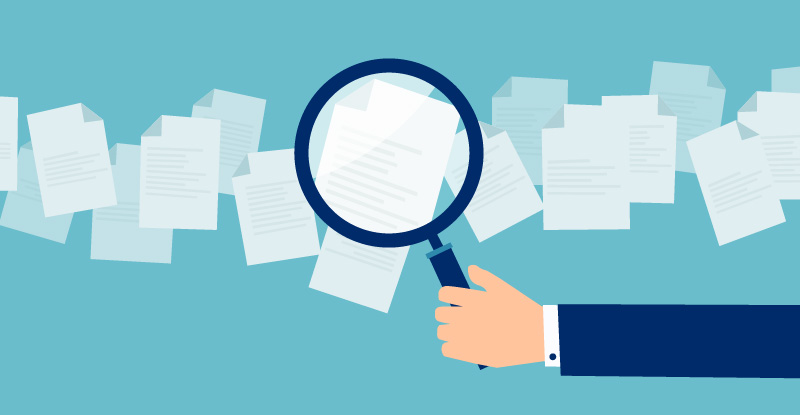
While there are fewer new measures than in previous years, those that have been introduced are significant
With tax season upon us, it’s a good time to review some of the main personal tax updates that you will need to consider this filing season and beyond.
“It has been a relatively light year for personal tax changes,” says Bruce Ball, FCPA, CPA Canada’s vice-president of taxation. “But there are key changes and new developments that individuals need to be aware of when filing their returns in 2023.”
Following is a brief look at what’s new for 2022 personal tax returns, important reminders of existing rules which will apply to 2022 returns and changes that will apply in 2023 and beyond.
New for 2022 tax returns
Covid-19 benefit repayments
The CRA has created the T1B Request to Deduct Federal COVID-19 Benefits Repayment in a Prior Year. According to the Canada Revenue Agency (CRA), if taxpayers repaid benefit amounts before January 1, 2023, they may choose when and how to claim the deduction on their tax return. “You have the option to claim your repayments as a deduction in the year you made the repayment or in the year you received the benefits. You may also split the deduction between your tax returns, as long as you do not deduct more than what you repaid.”
Housing related tax credits
In terms of existing tax credits, the amount used to calculate the first-time home buyer’s tax credit has increased to $10,000 for a qualifying home purchased after December 31, 2021. The government also announced an increase in the amount for the home accessibility tax credit to $20,000.
Other changes
There are a number of additional changes relating to specific deductions and tax credits, including the labour mobility deduction for tradespeople and additional medical expense tax credits for surrogacy, fertility clinics and sperm donor bank services. For self-employed individuals, they may be able to claim a refundable air quality improvement tax credit and immediate expensing deductions. These details and more can be found in the 2023 Tax Guide.
Important reminders for your 2022 returns
If you received federal, provincial, or territorial government COVID-19 benefit payments, such as the Canada Recovery Benefit, Canada Recovery Caregiving Benefit, Canada Recovery Sickness Benefit or Canada Worker Lockdown Benefit, you will receive a T4A slip with instructions on how to report these amounts on your return, notes Ball.
“If you are eligible to receive Climate Action Incentive Payments, you have to file a tax return even if you did not receive any income in the year,” he adds. “If you reside outside a census metropolitan area, tick the box under ‘Climate action incentive payment’ on page 2 of your return to apply for the rural supplement.”
The rules for claiming home office expenses for employees working from home due to the COVID-19 pandemic remain unchanged from 2021 and in particular, the flat-rate method is still available for 2022 personal returns, he adds. The flat rate amount is equal to $2 per day you worked at home due to Covid-19, up to a maximum of $500 where conditions are met. (See the CPA Canada 2021 tax blog for more details on the rules.)
Don’t forget that this year the deadline for filing your income tax and benefit return is May 1, 2023, as April 30 falls on a Sunday. According to the CRA, “Your return will be considered filed on time if the CRA receives it or it is postmarked on or before May 1, 2023. Similarly, your payment will be considered on time if it is received by the CRA or processed at a Canadian financial institution on or before May 1, 2023.”
Changes that will apply to 2023 returns and beyond
Housing related
The residential property flipping rule, which came into effect January 1, 2023, is part of a continuing effort to discourage residential property flipping and ensure profits are fully taxed, and as such, it “represents a major change for people who buy and sell residences within a year, says Ball. “The profits from any sale must be deemed an income inclusion versus a capital gain. They will be fully taxable in the year of sale and the Principal Residence Exemption will no longer apply.”
Exceptions include life events such as the death of the individual or related party, an addition to the household, separation or divorce, a threat to personal safety, serious illness or disability, work relocation or termination, insolvency, natural disaster, or expropriation of the home.
The new Multigenerational Home Renovation Tax Credit introduced in Budget 2022 also took effect January 1, 2023. It provides a 15 per cent tax refund on expenses of up to $50,000 to a maximum credit of $7,500 for expenses related to building a secondary suite for a family member who is a senior or an adult with a disability.
Ball reminds taxpayers that the First Home Savings Account (FHSA) rules become effective April 1, 2023. “You can contribute to $40,000 over your lifetime and up to $8,000 for any one year, including 2023, even though the rules don’t come into effect until April 1.” Unlike the RRSP rules, the carryover of the unused annual contribution limit is limited to one year and the limit applies to contributions made within the calendar year.
Indexation adjustments
The federal government has announced a number of indexation adjustments for personal income tax and benefit amounts. The indexation adjustment for personal income tax and benefit amounts for 2023 is 6.3 per cent.
The Old Age Security (OAS) pension repayment threshold based on net income for 2023 has been increased from $81,761 to $86,912.The repayment is 15 per cent of the individual’s net income in excess of the threshold up to the total amount of OAS payments received.
The maximum pensionable earnings under the Canada Pension Plan (CPP) for 2023 will be $66,600—up from $64,900 in 2022. The maximum employee and employer contribution is $3,754.45 each.
Maximum EI contribution premium for employees increased to $1,002.45 from $952.74, while maximum insurable earnings increased from $60,300 in 2022.
Maximum contribution changes for other registered plans for 2023 are as follows:
- The RRSP dollar limit has increased to $30,780 from $29,201.
- The TFSA dollar limit has increased to $6,500 from $6,000.
- The annual money purchase limit for RPPs has increased to $31,560 from $30,780.
- The defined benefit limit for RPPs increased to $3,506.67 from $3,420.00.
- The deferred profit sharing plan limit has increased to $15,780 from $15,390.
These, then, are the most significant tax changes to consider this filing season and beyond. As mentioned earlier, there were not as many big changes as in other years. However, as Ball points out, “It is always important to be familiar with new tax laws that come into play.”
Denise J. Deveau is a Toronto-based freelance writer specializing in business and technology related topics.
Visit CPABC's personal finance articles in our newsroom, as well as our FinLit page for more resources.
Originally published by CPA Canada's news site.



